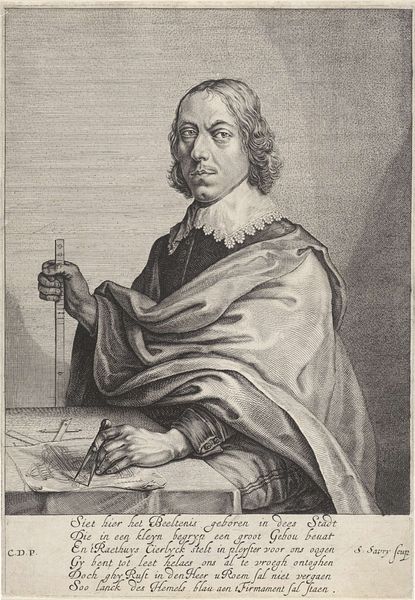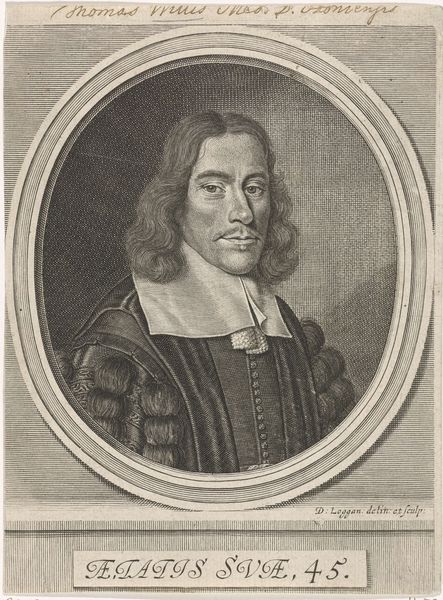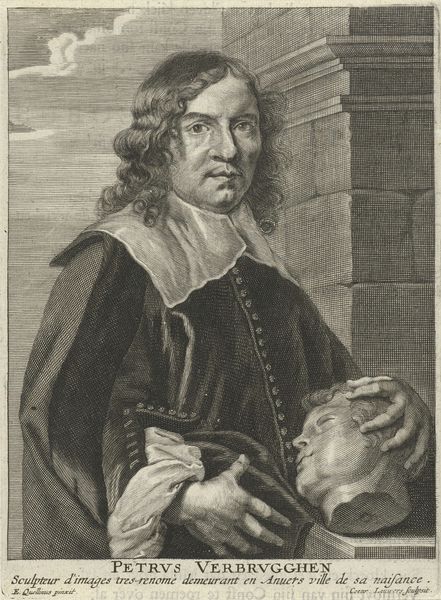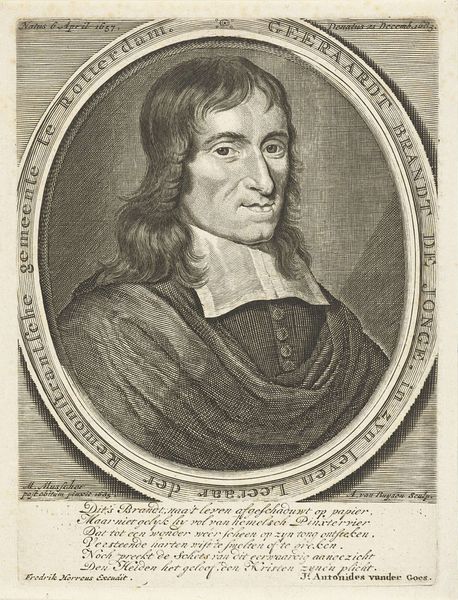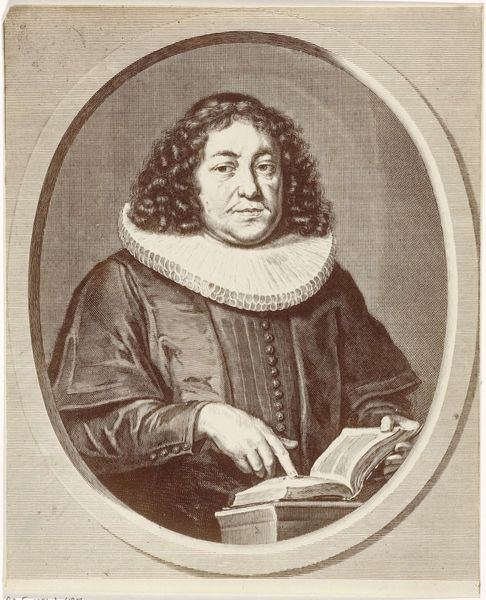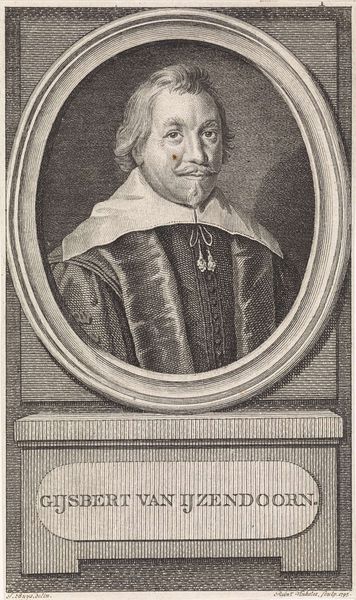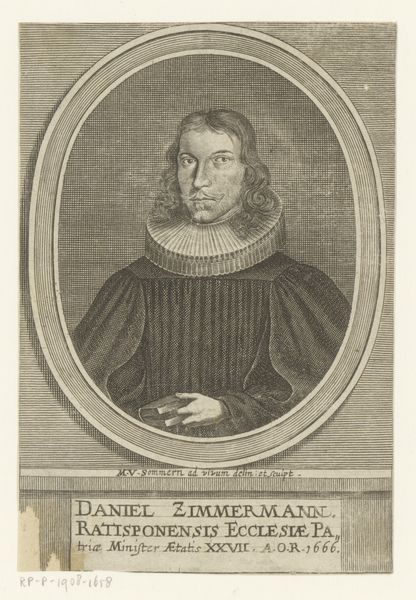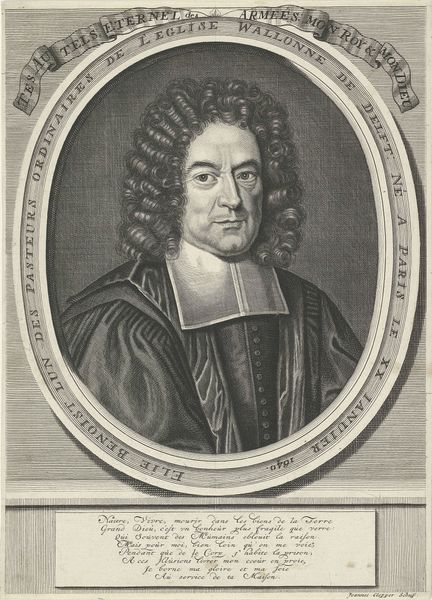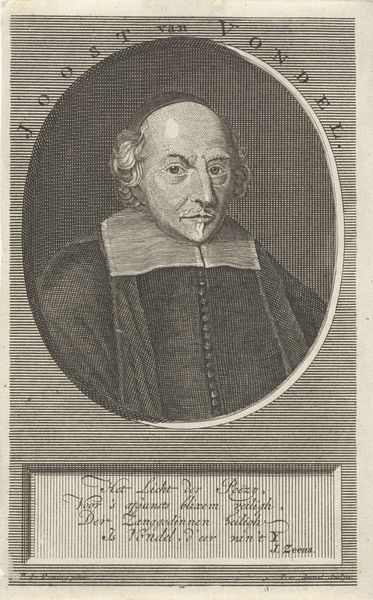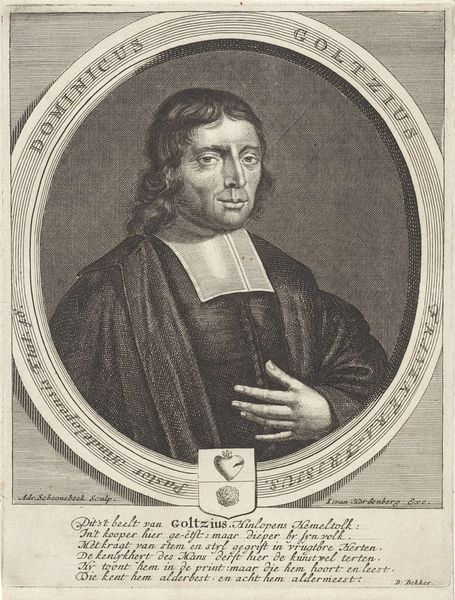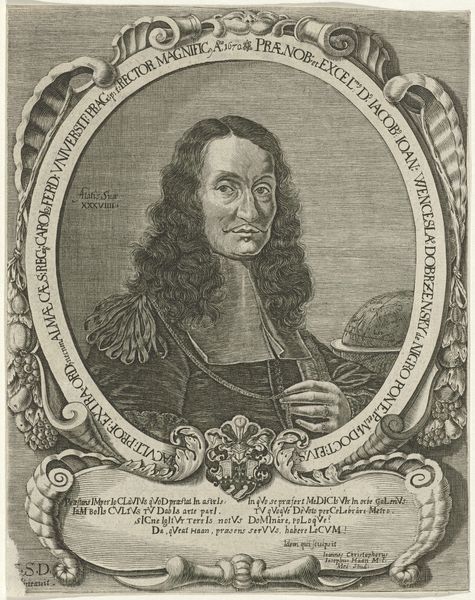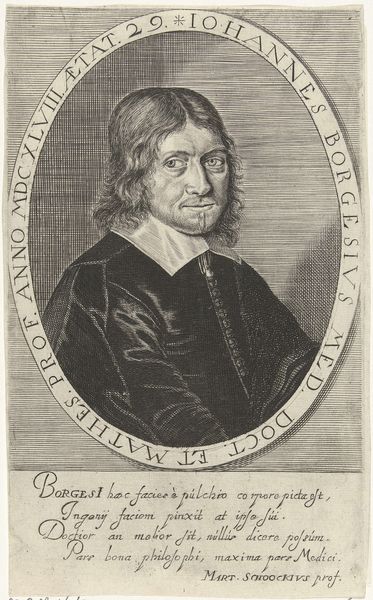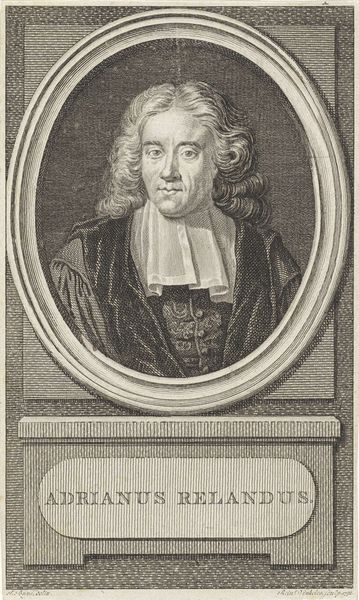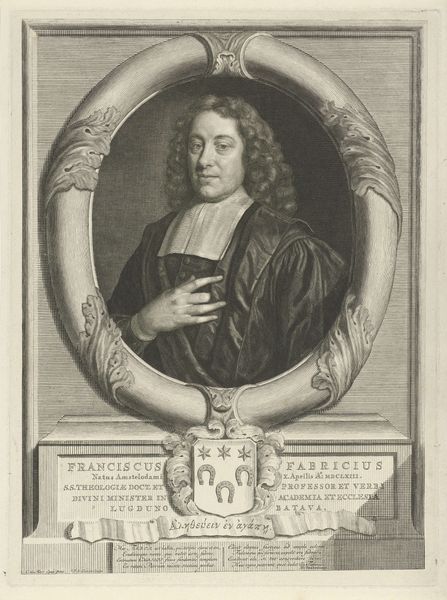
engraving
#
portrait
#
baroque
#
figuration
#
line
#
engraving
Dimensions: height 197 mm, width 142 mm
Copyright: Rijks Museum: Open Domain
Curator: Here we have David Loggan's engraving, "Portret van John Sparrow," dating back to 1659. Note the meticulous line work, typical of the Baroque era, rendered in this black and white print. What are your first thoughts on its aesthetic qualities? Editor: Gosh, he looks really intense! There's something deeply serious, almost melancholic, about his expression. And all that fine detail! It’s like peering into another century. It is fascinating, like a history book opened to the most dramatic page. Curator: Indeed. Loggan employs a rigorous linear structure, the detailed rendering creating a sense of texture and volume within the monochromatic palette. Consider the arrangement of elements—the subject's pose, the table laden with symbolic objects, and the textual inscription, all working in concert. Editor: Symbolic? What jumps out at me is this diagram hanging in the background. Looks like an anatomy study of the eye, but oddly…abstract. How does it relate to the portrait, or even the fellow's intense, scholarly expression? Curator: Ah, an astute observation! The "eye" diagram pertains to Sparrow's theological and philosophical inclinations. In his writings, the eye serves as a metaphor for spiritual insight and divine understanding, specifically relating to the teachings of philosopher Jacob Boehme, mentioned in the artwork's lower section. Editor: I see! So Loggan isn’t just giving us a likeness; he’s capturing something about the sitter’s intellect. Look at how Sparrow holds the quill, poised to write; it seems to underscore that he's about to give expression to divine insight. I appreciate the complexity; the visual narrative adds to its impact. Curator: Precisely. The detailed inscription furthers the depth, revealing Sparrow's affiliations with Boehme’s Teutonic philosophy and the convergence of theological and philosophical ideals. All are vital clues for decoding its semantic content. Editor: Well, I entered this expecting a straightforward portrait, and instead, I find myself knee-deep in 17th-century thought! This really changes how I view it; no longer is it a record of a historical figure, but a lens into the ideas that animated him. Curator: A fitting end to our brief exploration. This study showcases Loggan’s proficiency as an engraver and conveys deeper understanding of the relationship between visual form and intellectual expression. Editor: Absolutely, David Loggan gave the engraving "Portret van John Sparrow" an amazing ability to transport its viewers back to this very specific time.
Comments
No comments
Be the first to comment and join the conversation on the ultimate creative platform.
